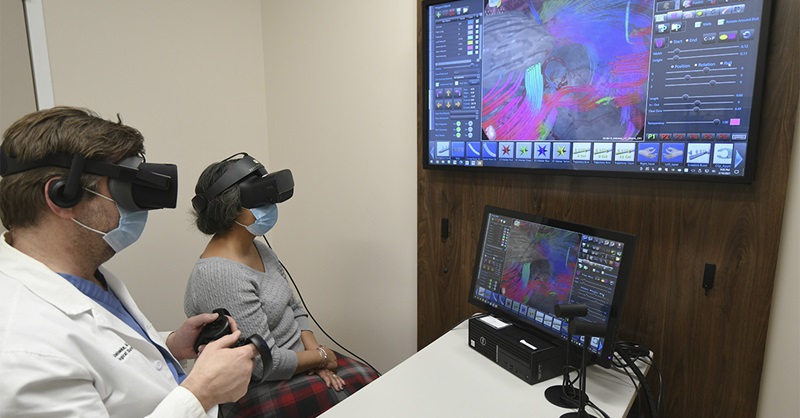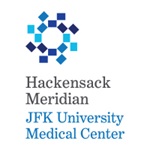JFK University Medical Center Finds Virtual Reality Tool Reduces Surgery Time
October 04, 2021

 At the newly renamed Hackensack Meridian JFK University Medical Center, new advances with the virtual reality tool Surgical Theater are bringing 3D virtual reality into the surgeon’s microscope view, creating an augmented reality where physicians can see through tissue and around corners. This helps maintain focus on the surgical site as relevant data is overlaid on the live image, allowing the surgeon to keep eyes on the patient at all times.
At the newly renamed Hackensack Meridian JFK University Medical Center, new advances with the virtual reality tool Surgical Theater are bringing 3D virtual reality into the surgeon’s microscope view, creating an augmented reality where physicians can see through tissue and around corners. This helps maintain focus on the surgical site as relevant data is overlaid on the live image, allowing the surgeon to keep eyes on the patient at all times.
JFK University Medical Center in Edison, N.J., is the only location in the state with this technology and is helping to define the tool’s best practices and potential. Surgical Theater virtual reality techniques applied in brain aneurysm surgery recently showed more precise, efficient results in comparison studies at JFK University Medical Center.
When employing the virtual reality (VR) tool, surgeons treating brain hemorrhaging have reported changing their approach at least 30 percent of the time. Thomas Steineke, M.D., Ph.D., Chair of JFK Neuroscience Institute, has led research showing how the use of 3D simulation in surgical planning significantly reduces surgery time and helps to predict which surgical clips to use to successfully seal off a bulging aneurysm on a blood vessel in the brain.
Research published in Clinical Neurosurgery evaluated use of the 360° VR models for planning brain procedures and simulated rehearsal of procedures, applying different clip sizes and configurations. By comparing a group of surgeons using VR and a group not applying VR technology, outcomes suggest that the technology helps decrease surgery time by 80 minutes in middle cerebral artery aneurysm clipping cases, and shorter surgeries are typically safer for patients.
Another Clinical Neurosurgery paper outlined post-surgical opportunities to apply VR for better outcomes. In this study, 360° VR reconstruction identified more subtle volume changes in the degree of aneurysm filling after clipping when compared to the standard measuring DSA and CTA imaging approaches. This may prove helpful in the evaluation of aneurysms after microsurgical clipping, should continued, larger scale studies validate these findings.
Learn more about the innovation happening at the newly renamed Hackensack Meridian JFK University Medical Center.